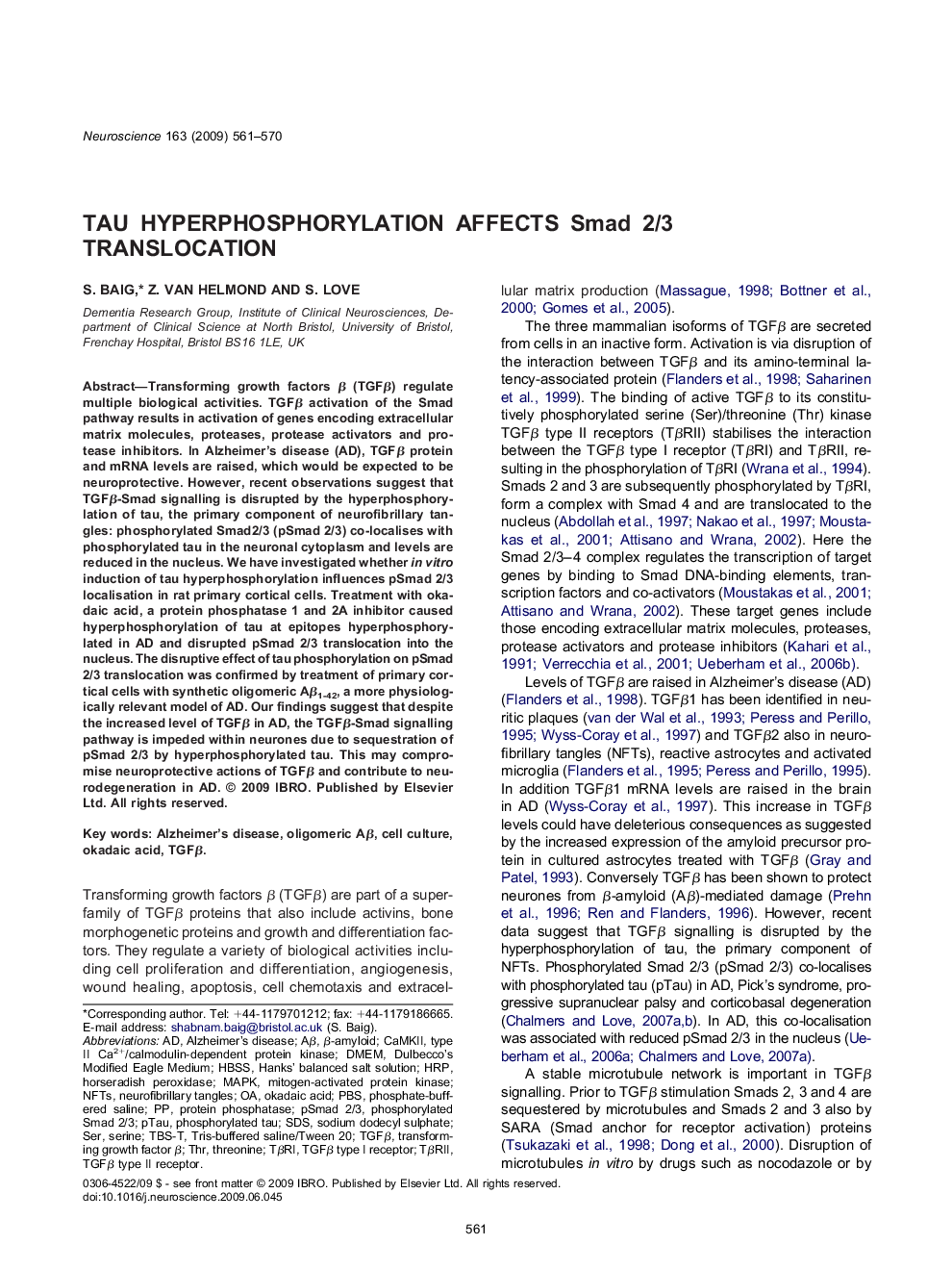| کد مقاله | کد نشریه | سال انتشار | مقاله انگلیسی | نسخه تمام متن |
|---|---|---|---|---|
| 4340105 | 1295783 | 2009 | 10 صفحه PDF | دانلود رایگان |

Transforming growth factors β (TGFβ) regulate multiple biological activities. TGFβ activation of the Smad pathway results in activation of genes encoding extracellular matrix molecules, proteases, protease activators and protease inhibitors. In Alzheimer's disease (AD), TGFβ protein and mRNA levels are raised, which would be expected to be neuroprotective. However, recent observations suggest that TGFβ-Smad signalling is disrupted by the hyperphosphorylation of tau, the primary component of neurofibrillary tangles: phosphorylated Smad2/3 (pSmad 2/3) co-localises with phosphorylated tau in the neuronal cytoplasm and levels are reduced in the nucleus. We have investigated whether in vitro induction of tau hyperphosphorylation influences pSmad 2/3 localisation in rat primary cortical cells. Treatment with okadaic acid, a protein phosphatase 1 and 2A inhibitor caused hyperphosphorylation of tau at epitopes hyperphosphorylated in AD and disrupted pSmad 2/3 translocation into the nucleus. The disruptive effect of tau phosphorylation on pSmad 2/3 translocation was confirmed by treatment of primary cortical cells with synthetic oligomeric Aβ1-42, a more physiologically relevant model of AD. Our findings suggest that despite the increased level of TGFβ in AD, the TGFβ-Smad signalling pathway is impeded within neurones due to sequestration of pSmad 2/3 by hyperphosphorylated tau. This may compromise neuroprotective actions of TGFβ and contribute to neurodegeneration in AD.
Journal: Neuroscience - Volume 163, Issue 2, 6 October 2009, Pages 561–570